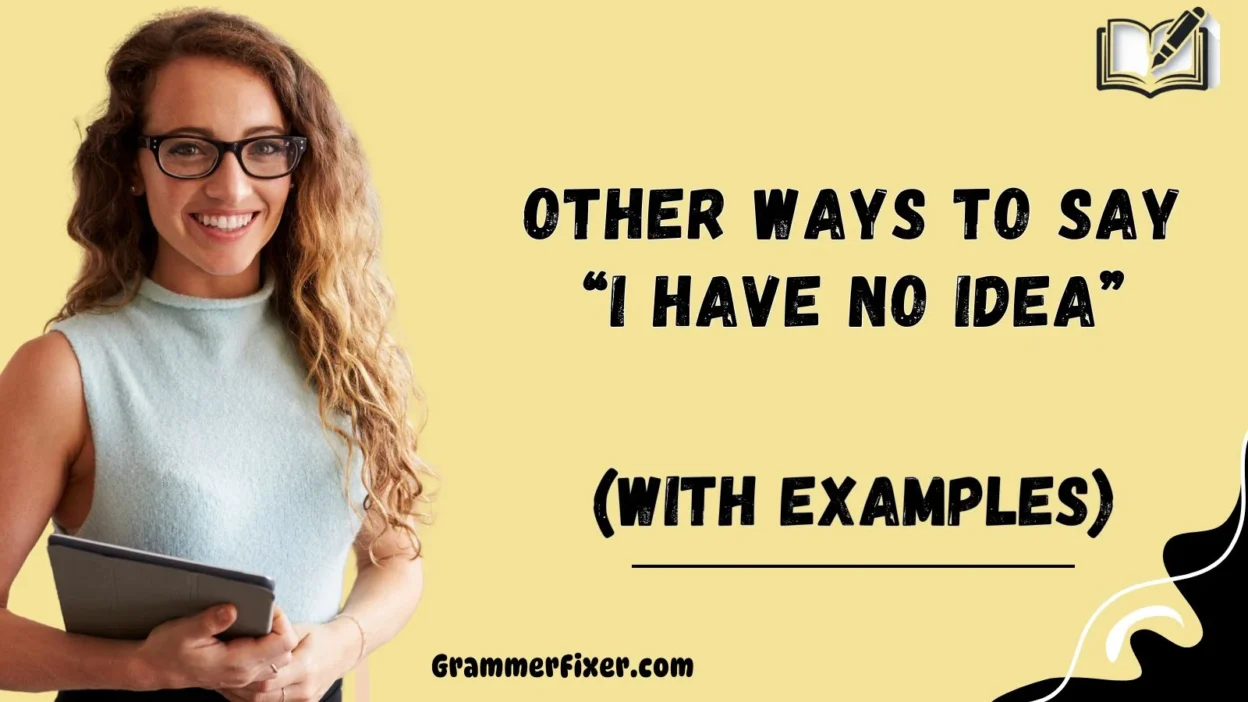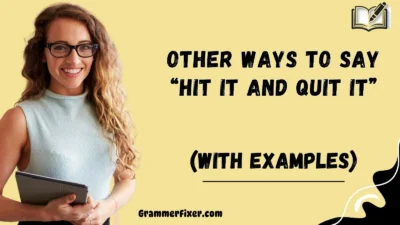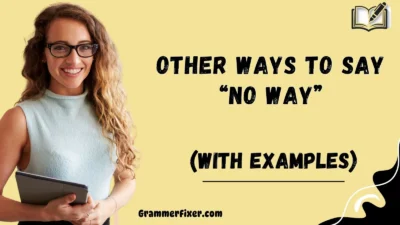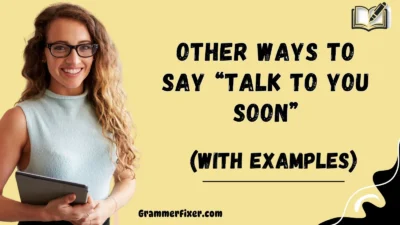Finding the right words to express ourselves can make even the simplest conversations feel more personal, warm, and thoughtful. Saying “I have no idea” can sometimes sound blunt, cold, or dismissive, especially in professional or caring settings. Thankfully, there are many empathetic, polite, and creative alternatives that allow you to communicate uncertainty while still showing care, understanding, and willingness to help.
This article explores 30 thoughtful alternatives to “I have no idea,” complete with meanings, examples, tone, and best uses—so you can express uncertainty with warmth, respect, and empathy in any conversation.
What Does “I Have No Idea” Mean?
The phrase “I have no idea” simply means you don’t know something. It’s a straightforward admission of uncertainty and a way to acknowledge a lack of knowledge.
When to Use “I Have No Idea”?
You might use this phrase in casual conversations with friends, family, or colleagues when you want to quickly express that you don’t know something. However, in professional settings, softer or more considerate alternatives can make the message feel more thoughtful and respectful.
Is It Professional/Polite to Say “I Have No Idea”?
In informal conversations, yes—it’s commonly used and well understood.
In professional or formal settings, however, it can come across as abrupt, unprepared, or dismissive. Choosing a more empathetic phrase can make a significant difference in how your tone is perceived.
Pros or Cons of Saying “I Have No Idea”
Pros:
- Simple and direct
- Widely understood
- Works well in casual, quick exchanges
Cons:
- Can sound blunt, cold, or dismissive
- May suggest a lack of professionalism in business settings
- Doesn’t show willingness to help or follow up
1. I’m Not Sure
Meaning: A softer way to admit uncertainty.
Explanation: Shows openness and leaves room for further discussion.
Scenario Example: “I’m not sure about the deadline, but I can check.”
Best Use: Professional and personal conversations.
Worst Use: When someone urgently needs a clear or confident answer.
Tone: Polite, approachable, thoughtful.
2. I Don’t Know at the Moment
Meaning: Admits lack of current knowledge but suggests possibility of knowing later.
Explanation: Adds time sensitivity, softens bluntness.
Scenario Example: “I don’t know at the moment, but I’ll get back to you.”
Best Use: Work discussions, when follow-up is possible.
Worst Use: In casual conversations where a quick, light response would feel more natural.
Tone: Professional, considerate.
3. That’s a Good Question
Meaning: Acknowledges the value of the question before admitting uncertainty.
Explanation: Shows respect and appreciation.
Scenario Example: “That’s a good question—I’ll need to double-check.”
Best Use: Business meetings, Q&A sessions.
Worst Use: In urgent or stressful situations where the question requires immediate clarity.
Tone: Respectful, thoughtful, appreciative.
4. I’ll Have to Look Into That
Meaning: Indicates willingness to investigate further.
Explanation: This phrase shifts focus from not knowing to taking initiative.
Scenario Example: “I’ll have to look into that and let you know by tomorrow.”
Best Use: Professional environments, when a solution or follow-up is expected.
Worst Use: Casual chats with friends where no further investigation is needed—it may sound overly formal.
Tone: Proactive, professional, helpful.
5. I Haven’t Looked Into That Yet
Meaning: Acknowledges that you haven’t explored the matter.
Explanation: Honest and clear about the current lack of information while leaving room for follow-up.
Scenario Example: “I haven’t looked into that yet, but I can find out.”
Best Use: Workplace settings when admitting you haven’t researched something.
Worst Use: In high-stakes meetings where unpreparedness may reflect poorly.
Tone: Honest, professional, responsible.
6. I Can’t Say for Certain
Meaning: Expresses doubt without sounding dismissive.
Explanation: A diplomatic way to share uncertainty, often used when precision is important.
Scenario Example: “I can’t say for certain if the numbers are final, but I’ll confirm.”
Best Use: Formal conversations, when accuracy is crucial.
Worst Use: Lighthearted chats with friends—it may sound stiff or too formal.
Tone: Diplomatic, cautious, respectful.
7. I Don’t Have the Answer Right Now
Meaning: Admits lack of immediate knowledge while keeping the door open.
Explanation: Balances honesty with the potential for follow-up.
Scenario Example: “I don’t have the answer right now, but I’ll update you soon.”
Best Use: Business discussions requiring follow-up.
Worst Use: Quick, casual exchanges where no follow-up is needed.
Tone: Professional, honest, thoughtful.
8. I Haven’t Heard Anything About That
Meaning: Admits being uninformed on a particular topic.
Explanation: Makes clear that the subject is outside your awareness.
Scenario Example: “I haven’t heard anything about that update.”
Best Use: Work settings when clarifying lack of exposure to new information.
Worst Use: Serious discussions where your role implies you should know.
Tone: Neutral, straightforward, transparent.
9. I’m Not Familiar With That
Meaning: Indicates lack of exposure or expertise.
Explanation: Useful when a subject lies outside your experience or field.
Scenario Example: “I’m not familiar with that software, but I can learn more.”
Best Use: Academic or professional contexts, when being honest about limits.
Worst Use: In casual settings, where it may sound unnecessarily formal.
Tone: Humble, honest, approachable.
10. That’s Outside My Expertise
Meaning: Acknowledges that the subject is beyond your area of knowledge.
Explanation: Positions your uncertainty as reasonable and professional.
Scenario Example: “That’s outside my expertise, but I can refer you to someone who knows.”
Best Use: Professional environments, academic or technical discussions.
Worst Use: Friendly conversations—it may come across as distant.
Tone: Professional, respectful, clear.
11. I’ll Need to Double-Check
Meaning: Suggests you may know but want to confirm.
Explanation: Emphasizes accuracy and reliability before giving a definite answer.
Scenario Example: “I’ll need to double-check the report before confirming.”
Best Use: Professional and academic settings where precision matters.
Worst Use: Casual conversations—it can sound overly formal for simple questions.
Tone: Careful, reliable, responsible.
12. I Don’t Have That Information Right Now
Meaning: Admits not having current access to the needed details.
Explanation: Shows honesty while leaving room for future updates.
Scenario Example: “I don’t have that information right now, but I’ll find out.”
Best Use: Workplace discussions involving reports or data.
Worst Use: Lighthearted social settings, where a casual “I don’t know” is fine.
Tone: Professional, thoughtful, direct.
13. I’ll Get Back to You on That
Meaning: Promises to follow up with an answer.
Explanation: Shows responsibility and initiative, especially in work contexts.
Scenario Example: “I’ll get back to you on that after I confirm with the team.”
Best Use: Business meetings, email communication.
Worst Use: Situations where follow-up is unlikely or not possible.
Tone: Proactive, supportive, committed.
14. I’m Drawing a Blank
Meaning: Informal way of saying you can’t recall or don’t know.
Explanation: Adds a human, lighthearted touch to admitting uncertainty.
Scenario Example: “I’m drawing a blank on that actor’s name.”
Best Use: Casual chats with friends, family, or teammates.
Worst Use: Formal settings like client meetings or interviews—it may seem unprofessional.
Tone: Casual, humorous, self-deprecating.
15. I’ll Need Some Time to Find Out
Meaning: Indicates a need for research or reflection.
Explanation: Frames uncertainty as part of a thoughtful process.
Scenario Example: “I’ll need some time to find out the exact details.”
Best Use: Academic or workplace contexts requiring careful answers.
Worst Use: Quick, casual exchanges where a long wait isn’t appropriate.
Tone: Patient, thoughtful, professional.
16. That’s Beyond My Scope
Meaning: Clarifies that the issue is outside your responsibility or role.
Explanation: Politely acknowledges limits without sounding dismissive.
Scenario Example: “That’s beyond my scope, but the finance team can help.”
Best Use: Professional and organizational contexts.
Worst Use: Informal conversations—it may sound cold or overly technical.
Tone: Professional, respectful, boundary-setting.
17. I’m Uncertain About That
Meaning: A formal way to express doubt or lack of clarity.
Explanation: Communicates uncertainty in a measured and respectful way.
Scenario Example: “I’m uncertain about the results, but we can review them together.”
Best Use: Academic, medical, or formal discussions where clarity matters.
Worst Use: Casual banter—it sounds too stiff in informal settings.
Tone: Formal, cautious, thoughtful.
18. I’m Afraid I Don’t Know
Meaning: Polite phrasing that adds a touch of apology.
Explanation: Shows consideration and softens the bluntness of “I don’t know.”
Scenario Example: “I’m afraid I don’t know the details of that policy.”
Best Use: Professional and social settings where politeness matters.
Worst Use: Extremely casual settings—it can sound overly formal with close friends.
Tone: Polite, gentle, empathetic.
19. I’m Not the Best Person to Answer That
Meaning: Redirects the question to someone more qualified.
Explanation: Helps maintain the conversation without dismissing the question.
Scenario Example: “I’m not the best person to answer that, but Sarah can help.”
Best Use: Professional environments, especially when collaborating.
Worst Use: Personal conversations where a simple “I don’t know” would suffice.
Tone: Collaborative, respectful, considerate.
20. I Haven’t Come Across That Before
Meaning: Suggests the topic is new or unfamiliar.
Explanation: Communicates curiosity rather than simple ignorance.
Scenario Example: “I haven’t come across that software before, but I’d like to learn more.”
Best Use: Academic, technical, or workplace discussions.
Worst Use: Urgent situations—it may sound like you’re avoiding responsibility.
Tone: Curious, open-minded, humble.
21. I’ll Need to Check on That
Meaning: Suggests you don’t know yet but are willing to investigate.
Explanation: Adds a proactive element, showing you care enough to find the answer.
Scenario Example: “I’ll need to check on that before giving you a final answer.”
Best Use: Workplace or client settings where responsibility matters.
Worst Use: Informal conversations—it may sound overly formal with friends.
Tone: Responsible, proactive, considerate.
22. I’m Stumped
Meaning: Informal phrase showing puzzlement or confusion.
Explanation: Often used lightheartedly when something is unexpected or surprising.
Scenario Example: “I’m stumped on how to solve this puzzle.”
Best Use: Friendly or casual discussions, team brainstorming.
Worst Use: Professional or formal environments—it can seem unprepared.
Tone: Casual, humorous, approachable.
23. I’m Not Equipped to Answer That
Meaning: Acknowledges limits while keeping the tone professional.
Explanation: Suggests the question requires resources or expertise you don’t have.
Scenario Example: “I’m not equipped to answer that, but the tech team should know.”
Best Use: Professional or academic contexts.
Worst Use: Friendly chats—it may sound too cold or technical.
Tone: Professional, respectful, clear.
24. I Can Look Into It Later
Meaning: Promises future action to address the uncertainty.
Explanation: Shows willingness to help while managing expectations.
Scenario Example: “I can look into it later and send you the details.”
Best Use: Professional settings where follow-up is possible.
Worst Use: Urgent matters where answers are needed immediately.
Tone: Helpful, patient, proactive.
25. I Don’t Have the Details Yet
Meaning: Indicates partial knowledge but lack of specifics.
Explanation: Honest without being dismissive—acknowledges information may come later.
Scenario Example: “I don’t have the details yet, but updates should be available tomorrow.”
Best Use: Business meetings or progress updates.
Worst Use: Situations where others expect you to already be fully briefed.
Tone: Professional, honest, transparent.
26. I’m Still Figuring That Out
Meaning: Suggests ongoing effort to understand or learn.
Explanation: Shows honesty while highlighting a growth mindset.
Scenario Example: “I’m still figuring that out as I learn the new system.”
Best Use: Learning environments, collaborative projects.
Worst Use: Critical decisions requiring confidence and certainty.
Tone: Humble, open, honest.
27. I’ll Need More Information First
Meaning: Admits that an answer isn’t possible without additional context.
Explanation: Frames uncertainty as a need for clarification.
Scenario Example: “I’ll need more information first before making a recommendation.”
Best Use: Workplace problem-solving, consulting.
Worst Use: Casual conversations—it can sound too formal or bureaucratic.
Tone: Analytical, professional, thoughtful.
28. I’m Not Updated on That Yet
Meaning: Acknowledges you haven’t received the latest information.
Explanation: Softens the uncertainty by implying an update is possible.
Scenario Example: “I’m not updated on that yet, but I’ll check with the team.”
Best Use: Corporate environments where information flows regularly.
Worst Use: Informal chats—it may sound stiff or unnatural with friends.
Tone: Professional, transparent, considerate.
29. I Can’t Confirm That Right Now
Meaning: Expresses uncertainty in a cautious, professional way.
Explanation: Shows respect for accuracy while leaving space for updates.
Scenario Example: “I can’t confirm that right now, but I’ll verify later.”
Best Use: Business or formal discussions requiring precision.
Worst Use: Everyday conversations—it may sound too rigid.
Tone: Diplomatic, careful, professional.
30. I Don’t Have Enough Information
Meaning: Admits lack of sufficient knowledge to answer properly.
Explanation: Straightforward but less blunt than “I have no idea.”
Scenario Example: “I don’t have enough information to make a decision yet.”
Best Use: Decision-making discussions, meetings, or reports.
Worst Use: Social conversations where a lighter tone is expected.
Tone: Direct, honest, professional.
Conclusion
At some point, we all face situations where we simply don’t have the answer. While saying “I have no idea” is common and direct, it can sometimes sound blunt, dismissive, or unhelpful—especially in professional or sensitive conversations.
The 30 alternatives shared in this guide give you the flexibility to express uncertainty in ways that feel more caring, professional, and meaningful. Some options are polite and formal for workplace discussions, others are casual and lighthearted for everyday conversations, and many allow you to show initiative by offering to follow up, investigate, or redirect the question.



